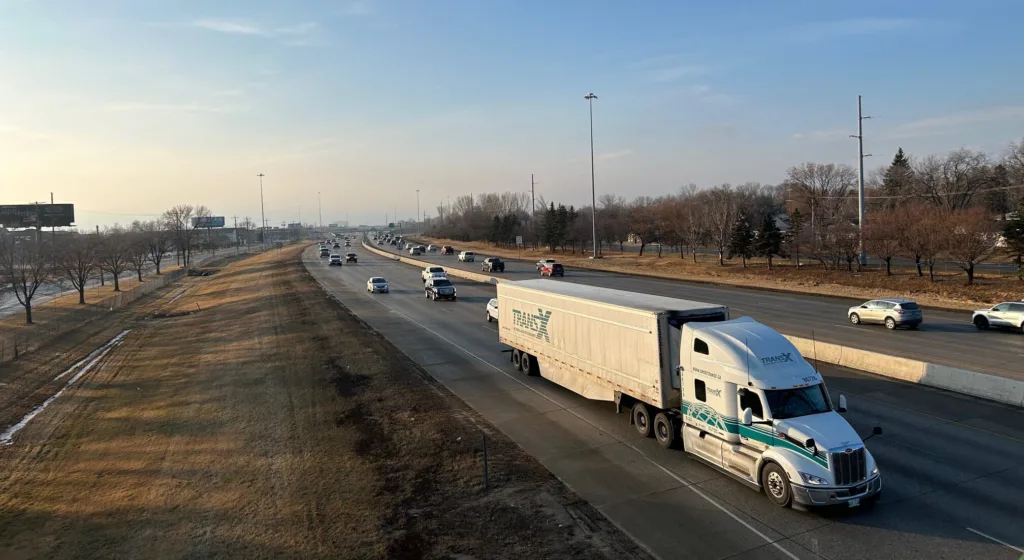

By: Jeff Beach (ND Monitor)
After pumping the brakes on increasing the speed limit to 80 mph on North Dakota interstate highways in the morning, the state House changed its mind Thursday evening.
The House voted 54-36 to pass House Bill 1298, which would increase the top speed limit to 80 mph and adopt a new system of calculating speeding fines on all roads.
The bill still needs to pass the Senate and be signed by the governor.
The bill failed in a close vote Thursday morning but a rule allowing a member of the prevailing side to ask for a new vote brought the bill back Thursday evening.
Rep. Liz Conmy, D-Fargo, said she was not aware of all of the benefits of a compromise worked out by a conference committee.
She described the increase in fines as “moderate” and said the streamlining of the formula for speeding fines would “provide a huge benefit to law enforcement.”
The bill also would allow for varying the speed limit depending on the driving conditions in some areas. Bill sponsor Ben Koppelman, R-West Fargo, said this likely would have been tested on Interstate 94 in the Valley City area, though the North Dakota Highway Patrol would have to find the funding for the variable speed signs.
He said by getting vehicles, especially trucks, to slow down during bad weather or an accident, it would help keep the interstates open and traffic flowing.
The bill also called for the Highway Patrol to study the point system associated with driving violations and the fees for traffic violations.
Some representatives questioned whether North Dakota would see an increase in serious or fatal accidents.
Rep. Mike Motschenbacher, R-Bismarck, cited statistics from South Dakota, which raised its interstate speed limit to 80 mph in 2015. He said the change has not had a dramatic effect on the fatality rate.
He said the higher fines could make the highways safer, citing his own driving habits in Minnesota, where fines are higher.
Rep. Jon Nelson, R-Rugby, questioned why no funding was requested for updating speed limit signs.
Koppelman said speed limit signs are routinely replaced as they lose their reflectiveness and money is already appropriated for replacing signs.
The changes would take effect Aug. 1 if signed by the governor.
For highways with a speed limit of 65 mph or higher, the fine will be $20 or $5 for every mile per hour over the limit, whichever is greater.
In slower speed zones, there will be a $20 fine minimum for speeding or $3 for every mile per hour over the limit, whichever is greater.
For both road categories, $20 is added to the fine if the driver is going more than 16 mph over the limit.
There also are increased fines for areas such as school zones and construction zones. The additional fine for speeding in a construction zone with workers present would increase from $80 to $150.
Koppelman said some local officials had been calling for higher fines to deter speeding on residential streets.
Under the current speeding fee formula, driving 35 mph in a 25 mph zone is a $10 fine. In the new formula, it would be $30.
Sen. Dean Rummel, R-Dickinson, said in a conference committee meeting that North Dakota’s fines would still be lower than surrounding states, even with the increases.
The Senate insisted on raising fines to go along with the higher speed limit though some in the Senate wanted to see a more dramatic increase.
“At least we’re headed in the right direction,” Rummel told the North Dakota Monitor.
The bill is expected to be considered by the Senate on Friday.